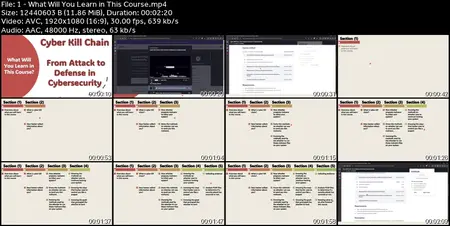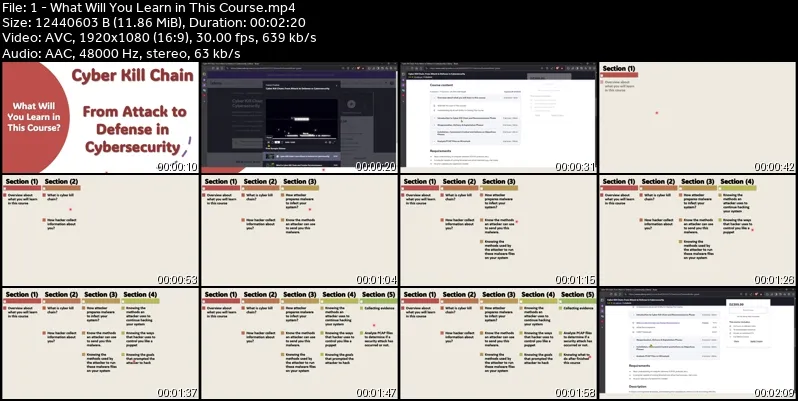Introduction In Cyber Attack For Beginners
MP4 | Video: h264, 1920x1080 | Audio: AAC, 44.1 KHz
Language: English (US) | Size: 1.79 GB | Duration: 2h 33m
MP4 | Video: h264, 1920x1080 | Audio: AAC, 44.1 KHz
Language: English (US) | Size: 1.79 GB | Duration: 2h 33m
How to Think Like a Hacker with PCAP analysis to anticipate, detect, and defend against cyber threats.
What you'll learn
Understand the Cyber Kill Chain framework and its importance in cybersecurity.
Analyze and interpret PCAP files to detect different attack stages.
Identify network indicators of compromise (IoCs) using packet analysis.
Apply defensive strategies to mitigate threats at each stage of the Cyber Kill Chain.
Requirements
Basic understanding of computer networks (TCP/IP, protocols, etc.).
A computer capable of running Wireshark and virtual machines (e.g., Kali Linux).
No prior cybersecurity experience needed!
Description
In today's evolving threat landscape, understanding how cyberattacks unfold is crucial for building effective defense strategies. This course takes you on a comprehensive journey through the Cyber Kill Chain, a model developed by Lockheed Martin that outlines the stages of a cyberattack — from reconnaissance to exfiltration.You will learn how attackers operate, how vulnerabilities are exploited, and how defenders can detect, respond to, and mitigate these threats. Additionally, we dive deep into analyzing PCAP files to uncover network traffic anomalies, identify malicious activities, and improve your incident response skills. Whether you're an aspiring cybersecurity professional or a seasoned IT expert, this course equips you with the knowledge needed to anticipate and counteract cyber threats.What You'll Learn:The 7 stages of the Cyber Kill Chain and how attackers leverage each phase.How to detect early signs of intrusion and prevent attacks before they escalate.Tools and techniques for PCAP file analysis to identify attack patterns.Real-world case studies to understand how cyberattacks are executed.Best practices for building a resilient cybersecurity posture.By the end of this course, you’ll be able to think like an attacker to better defend your network, making you a valuable asset in any cybersecurity team. Whether you’re preparing for a cybersecurity certification or aiming to enhance your defensive skills, this course offers essential insights to advance your career.
Who this course is for:
Cybersecurity beginners who want to understand attack methodologies and defense strategies., SOC Analysts and Blue Team members looking to improve their incident detection skills., Networking and IT professionals who want to analyze malicious traffic using PCAP files., Students and career changers interested in cybersecurity and ethical hacking.





